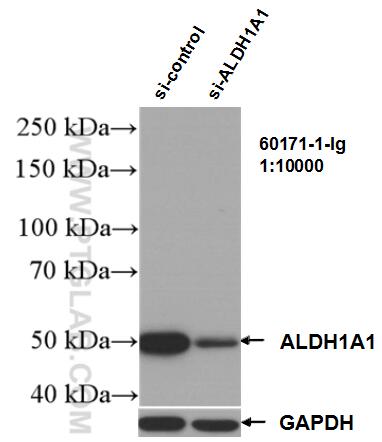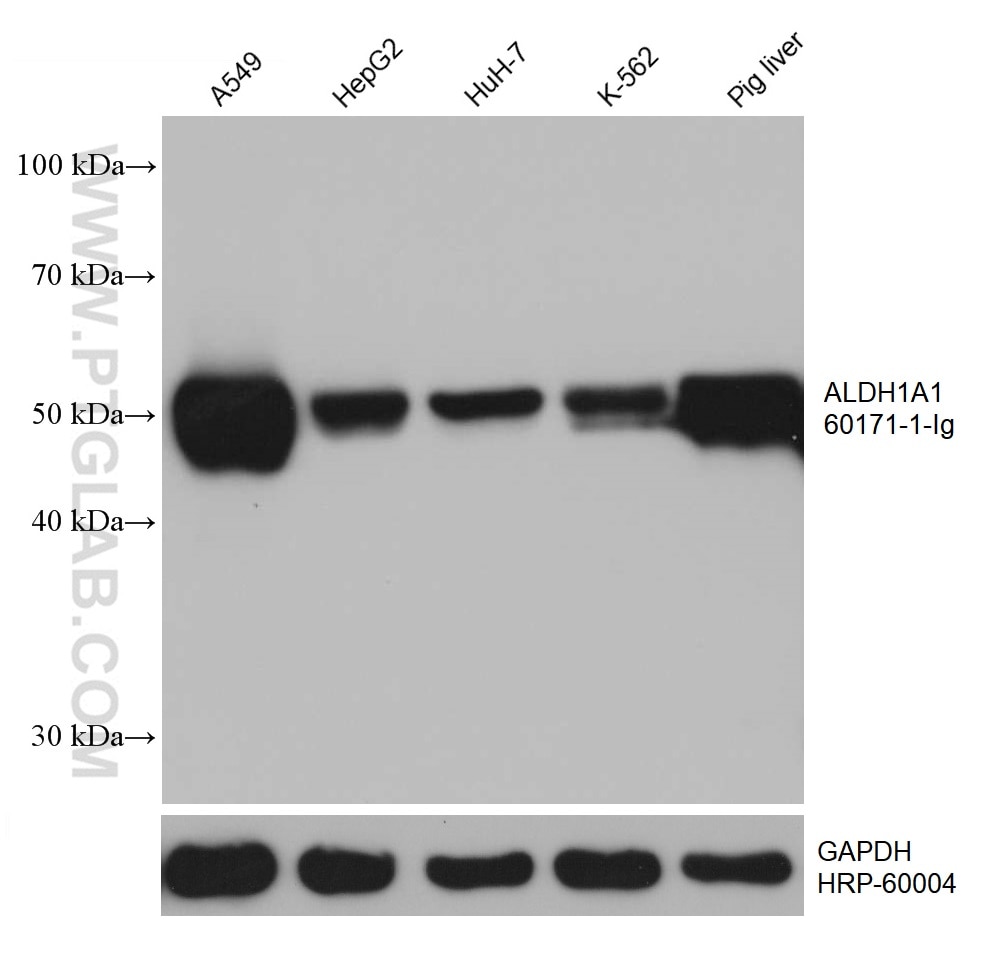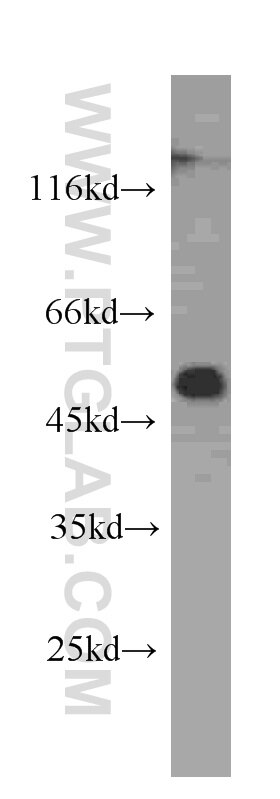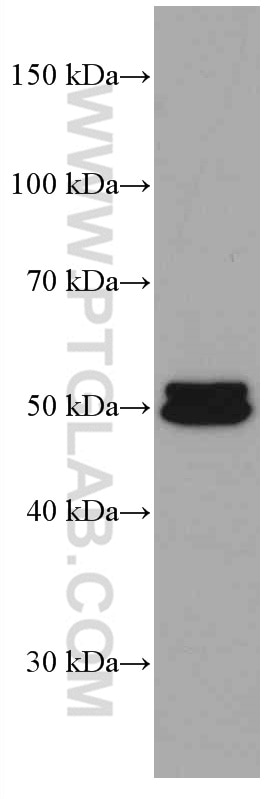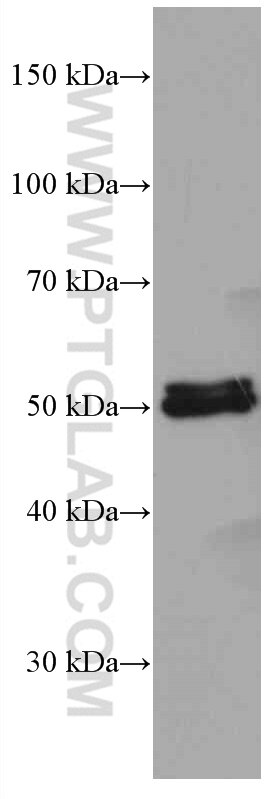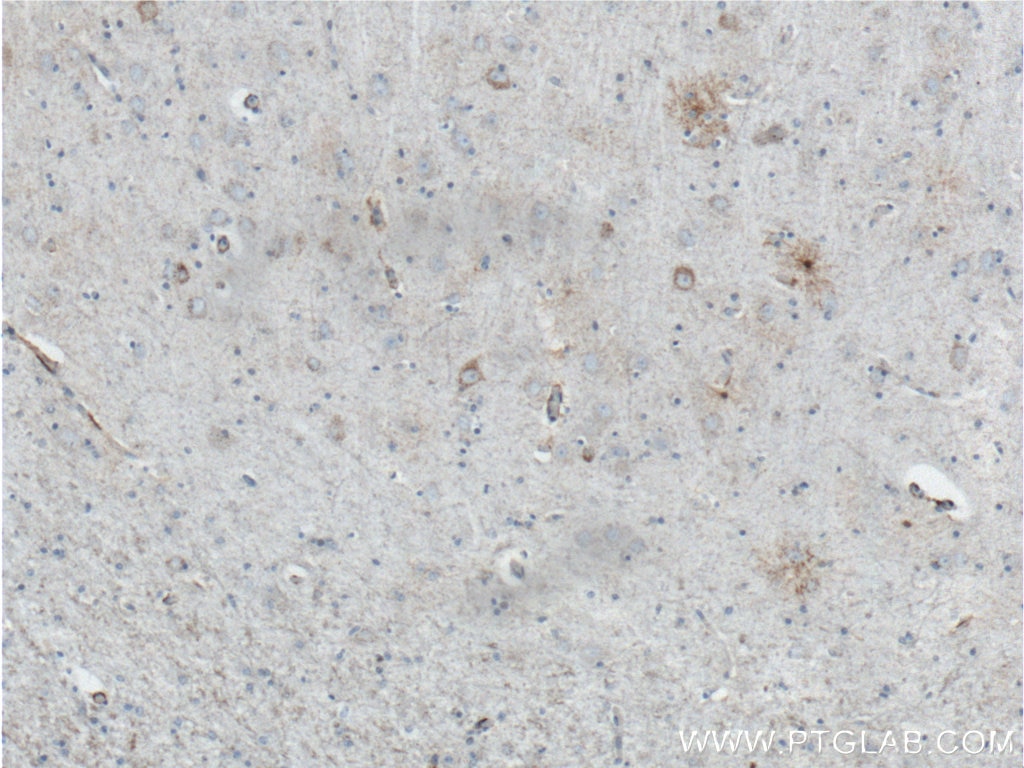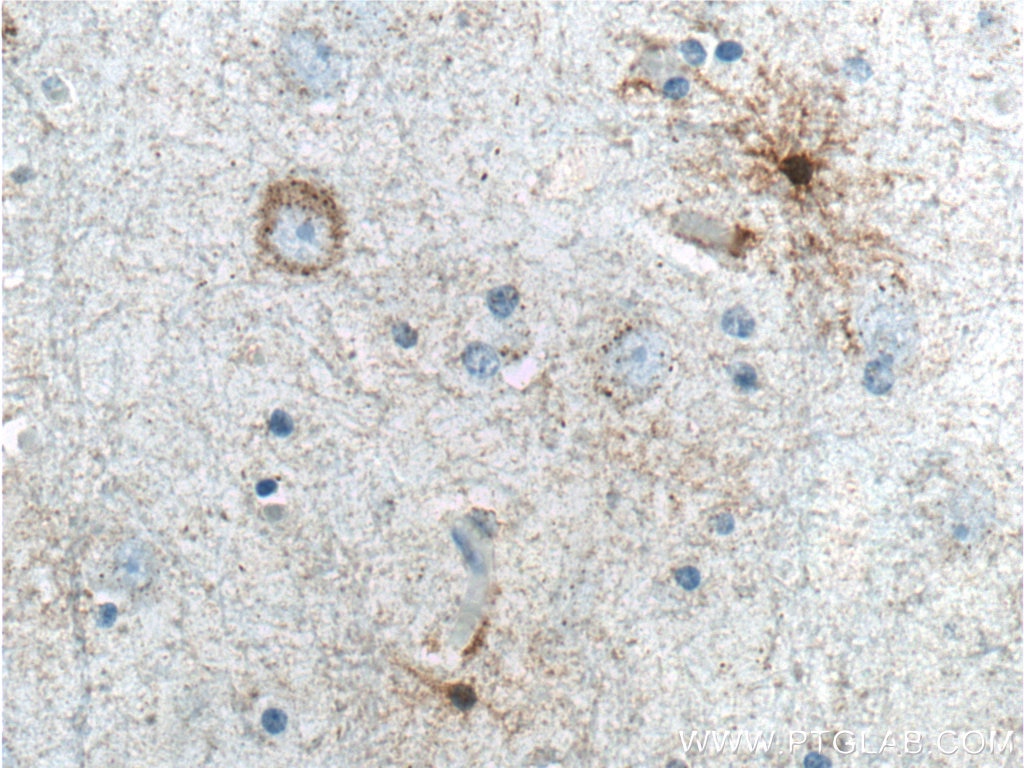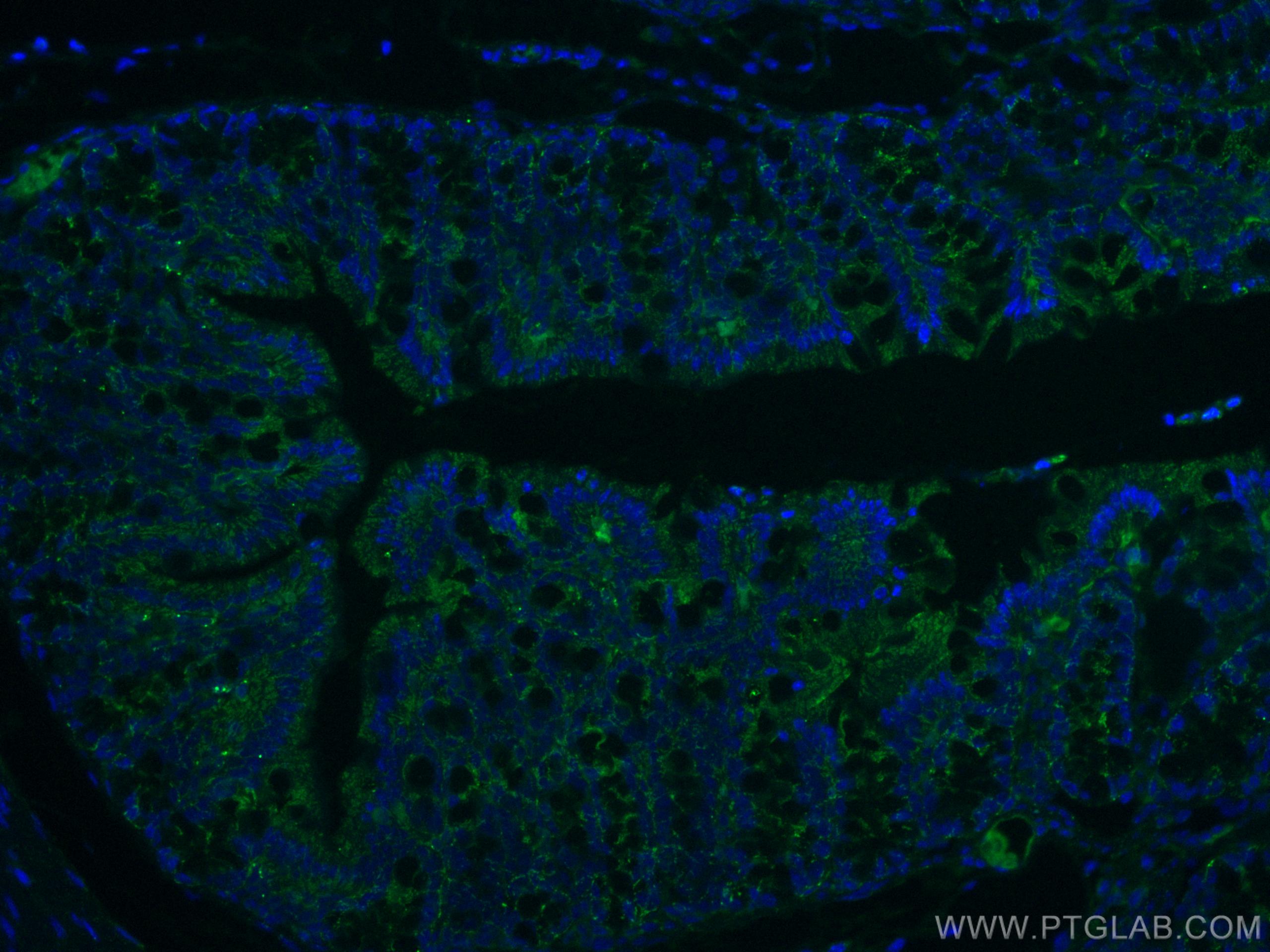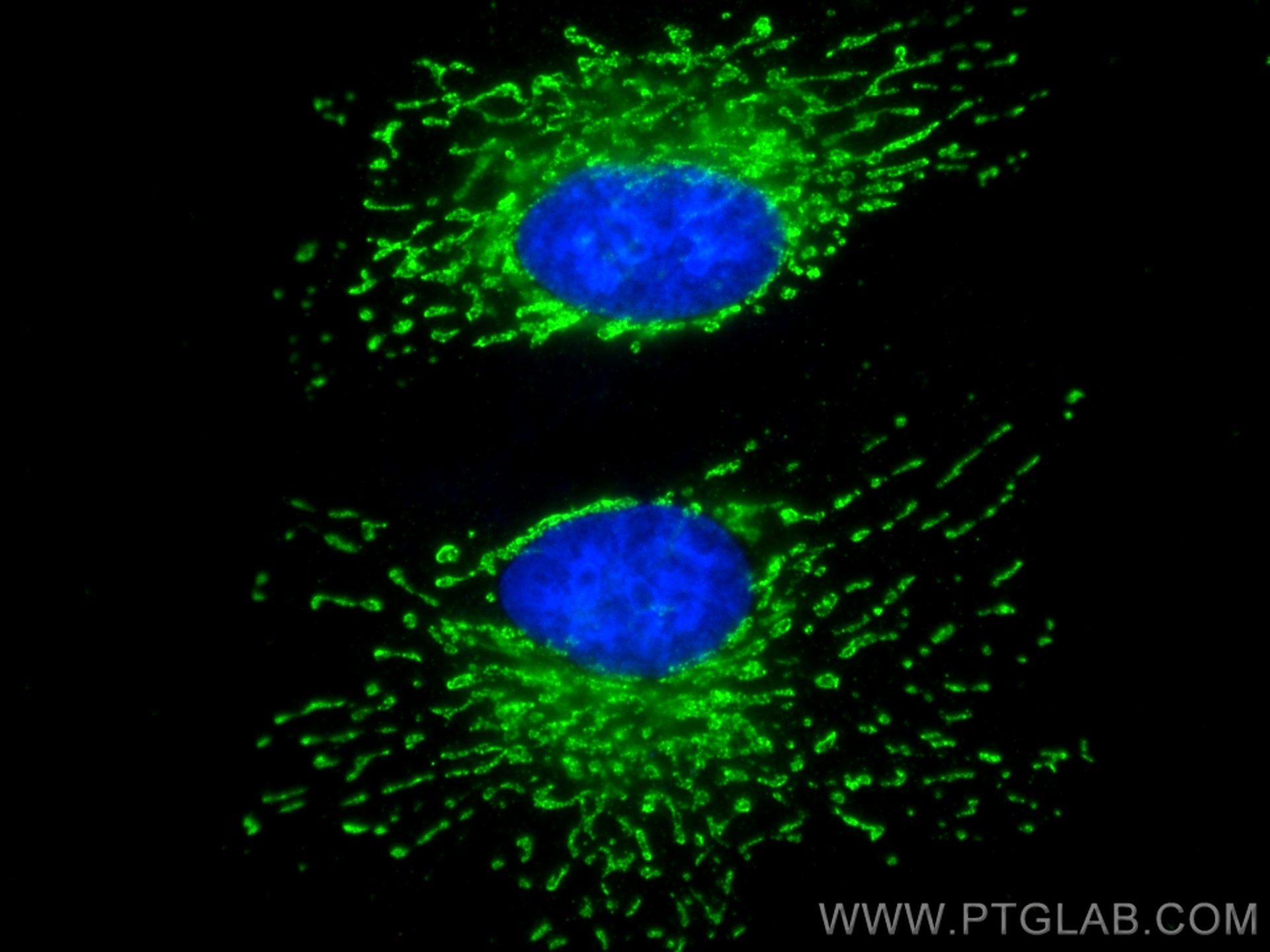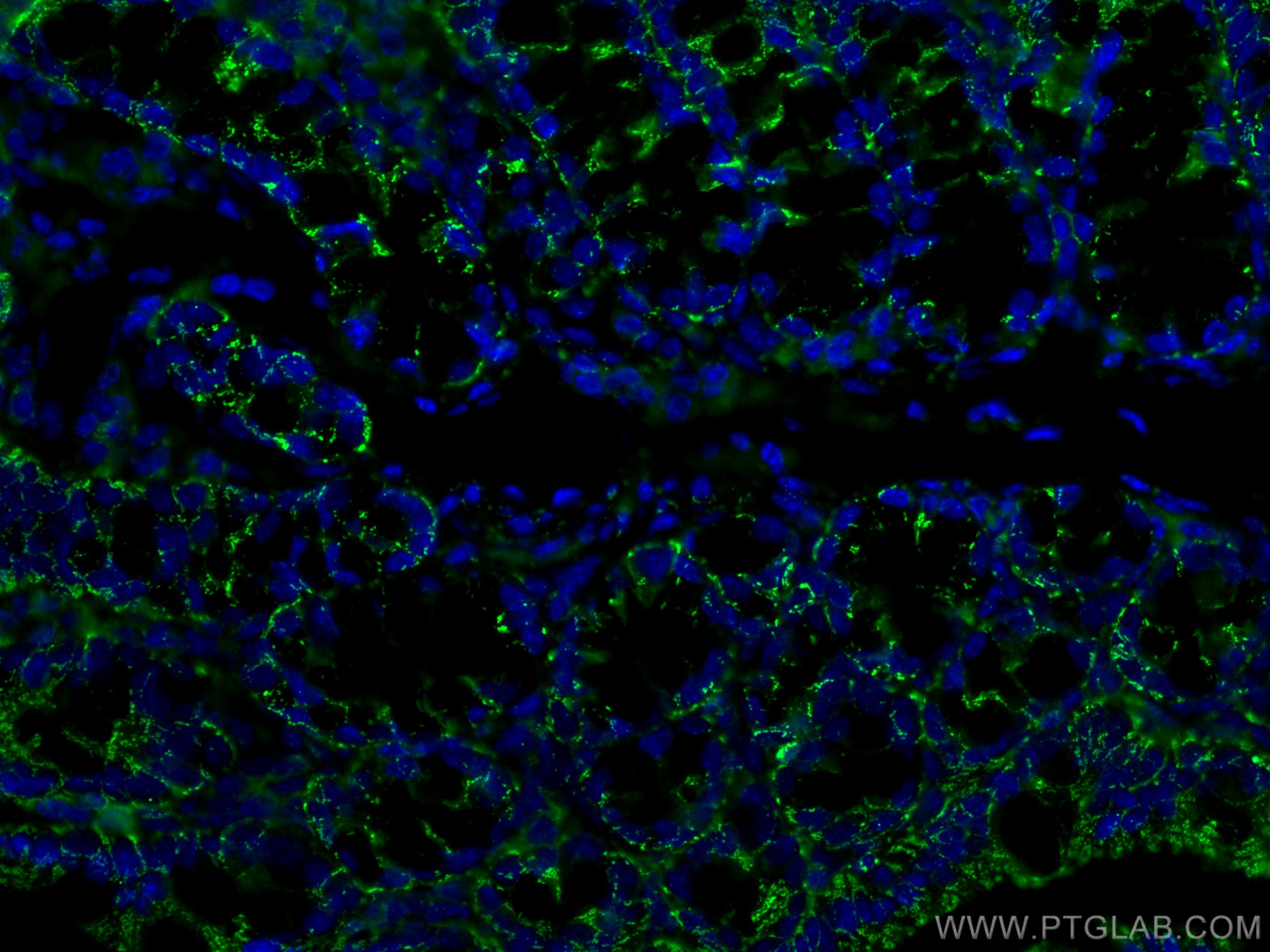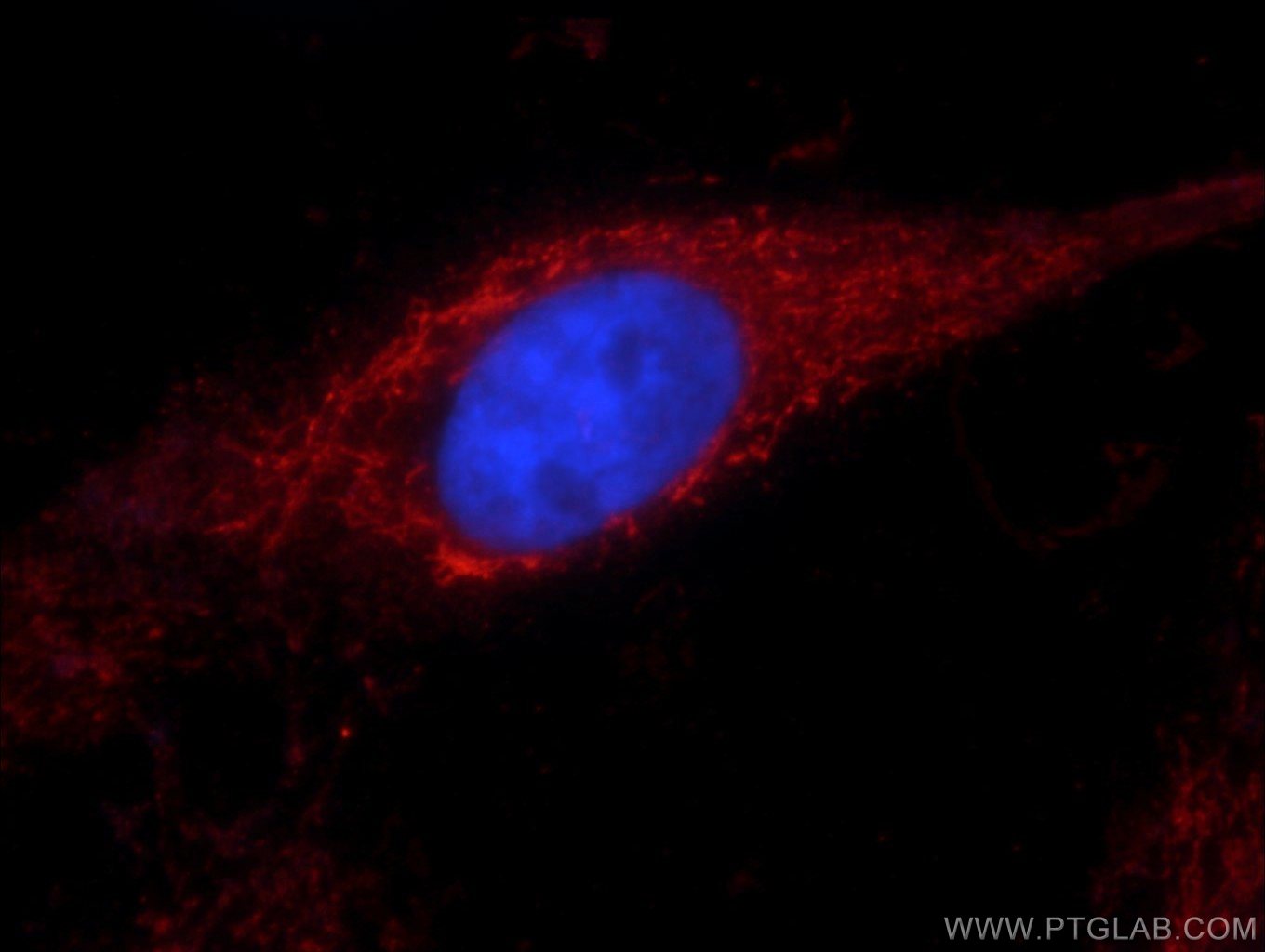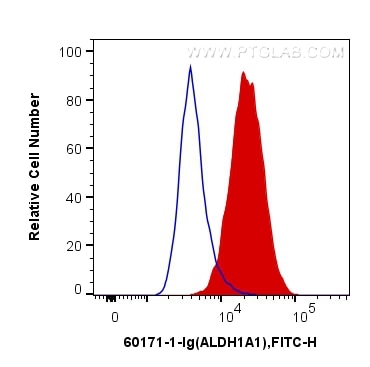- Phare
- Validé par KD/KO
Anticorps Monoclonal anti-ALDH1A1
ALDH1A1 Monoclonal Antibody for FC, IF, IHC, WB, ELISA
Hôte / Isotype
Mouse / IgG1
Réactivité testée
Humain, porc, rat, souris
Applications
WB, IP, IHC, IF, FC, CoIP, ELISA
Conjugaison
Non conjugué
CloneNo.
1A10A2
N° de cat : 60171-1-Ig
Synonymes
Galerie de données de validation
Applications testées
| Résultats positifs en WB | cellules A549, cellules HepG2, cellules HuH-7, cellules K-562, cellules MCF-7, tissu hépatique de porc, tissu hépatique de rat |
| Résultats positifs en IHC | tissu cérébral humain il est suggéré de démasquer l'antigène avec un tampon de TE buffer pH 9.0; (*) À défaut, 'le démasquage de l'antigène peut être 'effectué avec un tampon citrate pH 6,0. |
| Résultats positifs en IF | cellules HeLa, cellules A431, tissu de côlon de souris |
| Résultats positifs en cytométrie | cellules HepG2, |
Dilution recommandée
| Application | Dilution |
|---|---|
| Western Blot (WB) | WB : 1:5000-1:50000 |
| Immunohistochimie (IHC) | IHC : 1:50-1:500 |
| Immunofluorescence (IF) | IF : 1:400-1:1600 |
| Flow Cytometry (FC) | FC : 0.20 ug per 10^6 cells in a 100 µl suspension |
| It is recommended that this reagent should be titrated in each testing system to obtain optimal results. | |
| Sample-dependent, check data in validation data gallery | |
Informations sur le produit
60171-1-Ig cible ALDH1A1 dans les applications de WB, IP, IHC, IF, FC, CoIP, ELISA et montre une réactivité avec des échantillons Humain, porc, rat, souris
| Réactivité | Humain, porc, rat, souris |
| Réactivité citée | Humain, souris |
| Hôte / Isotype | Mouse / IgG1 |
| Clonalité | Monoclonal |
| Type | Anticorps |
| Immunogène | ALDH1A1 Protéine recombinante Ag8551 |
| Nom complet | aldehyde dehydrogenase 1 family, member A1 |
| Masse moléculaire calculée | 501 aa, 55 kDa |
| Poids moléculaire observé | 52 kDa |
| Numéro d’acquisition GenBank | BC001505 |
| Symbole du gène | ALDH1A1 |
| Identification du gène (NCBI) | 216 |
| Conjugaison | Non conjugué |
| Forme | Liquide |
| Méthode de purification | Purification par protéine A |
| Tampon de stockage | PBS avec azoture de sodium à 0,02 % et glycérol à 50 % pH 7,3 |
| Conditions de stockage | Stocker à -20°C. Stable pendant un an après l'expédition. L'aliquotage n'est pas nécessaire pour le stockage à -20oC Les 20ul contiennent 0,1% de BSA. |
Informations générales
ALDH1A1(Aldehyde dehydrogenase family 1 member A1 ), also named as ALDC, ALDH1 and PUMB1, belongs to the aldehyde dehydrogenase family. The ALDH1A1 gene encodes a liver cytosolic isoform of acetaldehyde dehydrogenase, an enzyme involved in the major pathway of alcohol metabolism after alcohol dehydrogenase. ALDH1A1 plays a critical role in protection against oxidative stress-induced cytotoxicity in lens epithelial cells(PMID:19296407). And it is important for multiple biological activities including drug resistance, cell differentiation, and oxidative stress response(PMID:19025616). As a novel cancer stem cell marker, ALDH1A1 can be used for tumors whose corresponding normal tissues express ALDH1A1 in relatively restricted or limited levels such as breast, lung, ovarian or colon cancer(PMID: 20422001).
Protocole
| Product Specific Protocols | |
|---|---|
| WB protocol for ALDH1A1 antibody 60171-1-Ig | Download protocol |
| IHC protocol for ALDH1A1 antibody 60171-1-Ig | Download protocol |
| IF protocol for ALDH1A1 antibody 60171-1-Ig | Download protocol |
| Standard Protocols | |
|---|---|
| Click here to view our Standard Protocols |
Publications
| Species | Application | Title |
|---|---|---|
Cell Glia-to-Neuron Conversion by CRISPR-CasRx Alleviates Symptoms of Neurological Disease in Mice. | ||
iScience Modification of lysine-260 2-hydroxyisobutyrylation destabilizes ALDH1A1 expression to regulate bladder cancer progression
| ||
Front Pharmacol Autophagy Inhibition Enhances the Anti-Tumor Activity of Methylseleninic Acid in Cisplatin-Resistance Human Lung Adenocarcinoma Cells. | ||
Oral Dis microRNA-17 is a tumor suppressor in oral squamous cell carcinoma and is repressed by LSD1. | ||
Mol Med Rep lncRNA TPTEP1 inhibits stemness and radioresistance of glioma through miR‑106a‑5p‑mediated P38 MAPK signaling. | ||
